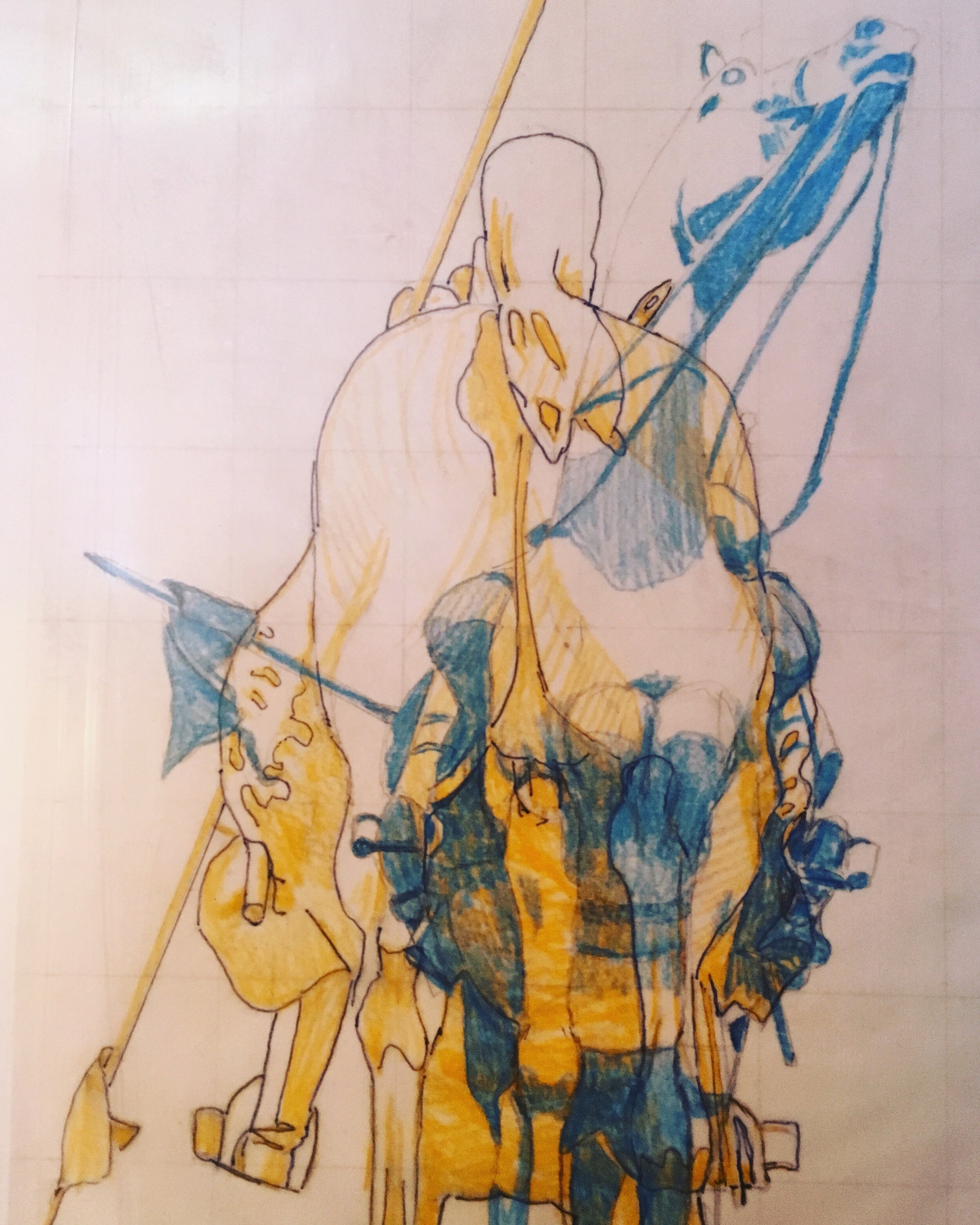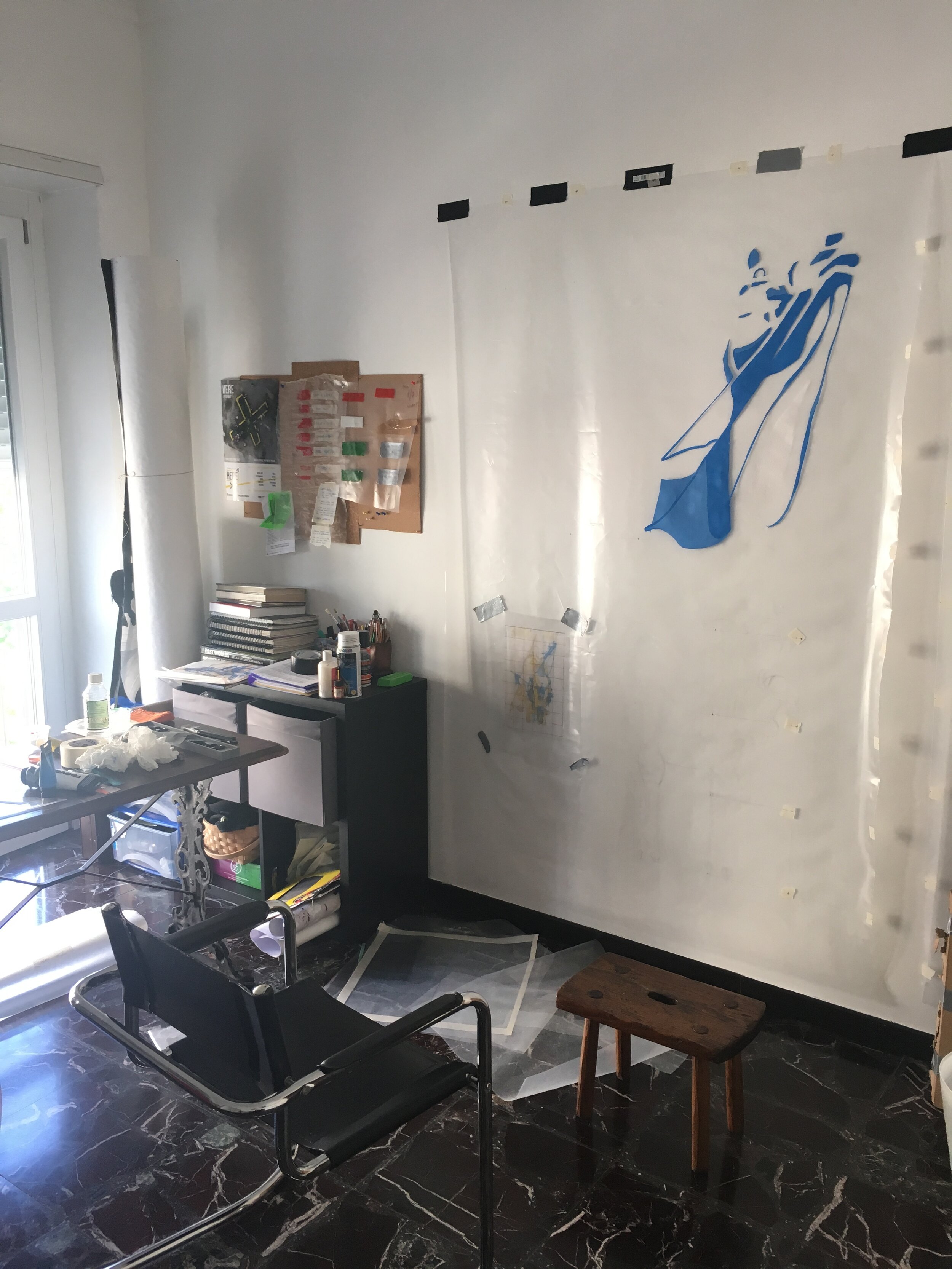The as yet untitled work about the duality of power is now complete. These photographs of sheet five (taken over a period of five or six hours- click to enlarge) show my method, which in itself was entirely driven by rules; firstly dividing the shadows into blocks and then layering them up like a screenprint. Again, here we can see how the reverse side of the piece shows through the masked, negative spaces of the other.
The statue depicted here is of Emanuele Filiberto, ‘Testa di Ferro’ in Piazza San Carlo, Turin. A character of considerable fame from sixteenth century Italy, namely because he made Italian the official Savoy language instead of Latin and moved what became the Turin Shroud to the city cathedral. He is also known however, as being a ruthless strategist and exploited any weaknesses for his own ends. My inclusion of him in this project reflects the unavoidable problems related to how powerful people have to present themselves. What are they hiding? What don’t we know? Such ‘PR’ battles and embarrassing ‘reveals’ dominate our news feeds these days but monuments like this one have a wonderfully bombastic way of ignoring everything but heroism- so much so that you get drawn into the romance of it before anything else.
I think the work has been a success; power is portrayed in a graphic sense but it’s also abstracted due to the complimentary colour scheme. Failures would lie in the difficulties I had in finding a workable technique and sometimes losing touch with the concept as a result. Above all, the work has been an intriguing one in terms of using painting to ask sculptural questions.
Coming up in part four:
Title
Once an appropriate venue presents itself, the five pieces will be mounted and placed together in a sequence/installation yet to be determined.















